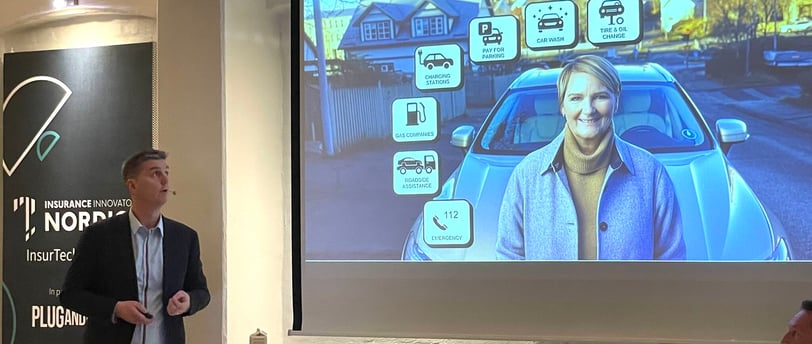How Telematics Can Drive Down CO2 Emissions and Revolutionize Motor Insurance
This week at the Insurance Innovators Summit Nordics, climate change and ESG dominated discussions. Nordic insurers are committed to reducing their CO2 footprint, including their supply chains, but there's little focus on influencing customers' emissions. Motor insurance is one area where insurers can help, as cars contribute 15% of Europe's CO2 emissions.
Fridrik Thor Snorrason
4/30/20232 min read


I was this week at the excellent Insurance Innovators Summit Nordics in Copenhagen and while it is still fresh in my mind I will publish a few posts with reflections on the conference. This is the first of three posts.
Climate change and ESG were by far the most dominant themes at the conference and clear that many Nordic insurers are determined to lower their own direct CO2 footprint. Some are also already implementing strategies to lower the CO2 footprint created throughout their supply chain for claims handling.
There was, however less talk about whether insurers are in a position to influence the CO2 footprint of their customers.
One area where insurers can play a central role in lowering their customers´ CO2 emissions is through motor insurance, but private cars and light vehicles account for 15% of all CO2 emissions in Europe. Every time I look at the numbers for the potential impact of telematics motor insurance, I am just perplexed as to why the motor insurance industry hasn‘t switched completely to telematics-based products. The moral argument for telematics is very strong both in terms of the environment and increasing safety.
Before we get to the numbers, we need to answer how telematics can help to reduce CO2 emissions. Multiple studies have shown that combination of telematics and incentives for safe and eco-friendly driving behavior, such as maintaining a steady speed, avoiding sudden acceleration, and hard braking can lower CO2 emissions significantly. Eco-friendly driving impacts emissions in at least three ways: Reduced fuel consumption, reduced road erosion, and slower wear and tear of cars.
Now, the numbers. If you manage to move 100.000 customers to a motor insurance product that uses telematics and provides them with incentives for smoother driving you could be reducing CO2 emissions by 10%. What does this actually mean? A CO2 reduction of over 16.500 metric tons per year*.
Still not sure that this will make much difference?
To achieve the same results with carbon-neutralizing strategies, like planting trees, you would have to plant over 1.600.000 trees. Yes, you read correctly – over ONE POINT SIX MILLION TREES!
Are consumers ready for telematics? The simple answer is yes. According to a recent Accenture study, around 70% of consumers are willing to try telematics if it gives them access to lower premiums.
The initial post was published on LinkedIn.
__________________
Just for the sake of disclosure here are some of the assumptions used in the post 🤞
*Assumptions: Average CO2 emissions per driven km (0,13 kg) x number of driven km (12.750) -> total emissions = 1,66 tons of CO2. 10% reduction in CO2 emissions = 166 kg. Average CO2 absorbed by a tree = 10kg per year.
There are a number of studies that show the potential impact of telematics insurance on CO2 emissions, and the results vary from 5% to above 20%. Although these studies show slightly different results when it comes to the level of impact, there is absolutely no doubt that the use of telematics does have a positive impact on CO2 emissions. Hopefully we will soon see new studies that shed further light on the topic.
______
3 Driving Habits That Raise Carbon Emissions, IMS
Telematics in Auto Insurance, Sam Madden, Chief Scientist, CMT
How much CO2 does a tree absorb? One Tree Planted
The Future of Insurance: Capco Global Insurance Survey, 2021
Guide insurance customers to safety and well-being, Accenture, 2021
